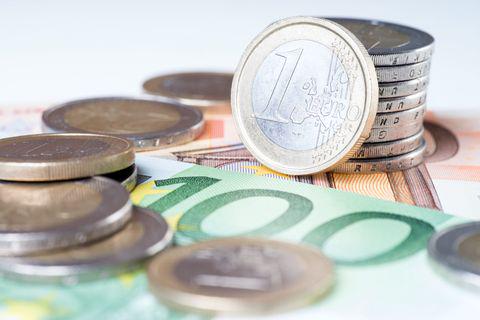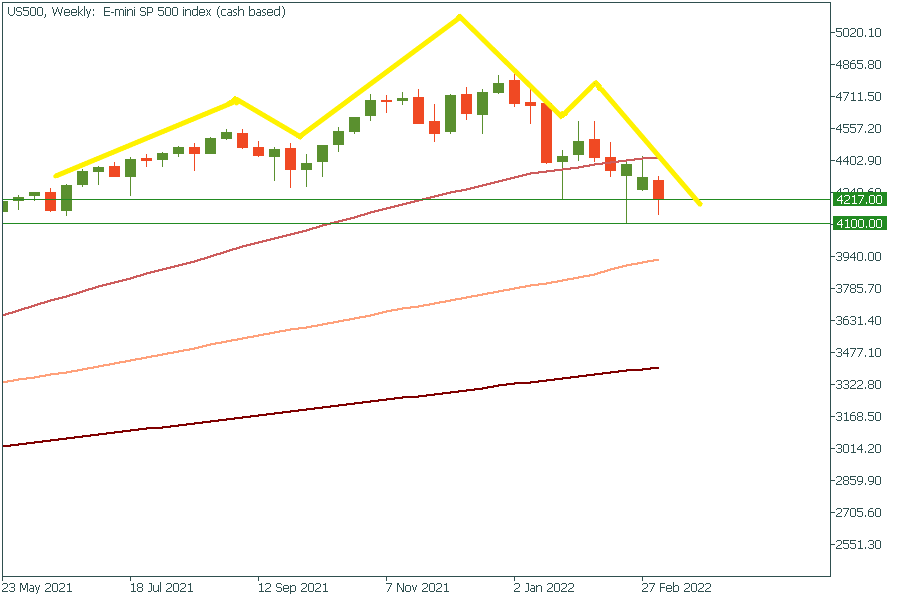
Recently, for the first time in two decades, the euro reached parity with the US dollar…

Don’t waste your time – keep track of how NFP affects the US dollar!
Data Collection Notice
We maintain a record of your data to run this website. By clicking the button, you agree to our Privacy Policy.

Beginner Forex Book
Your ultimate guide through the world of trading.
Check Your Inbox!
In our email, you will find the Forex 101 book. Just tap the button to get it!
Risk warning: ᏟᖴᎠs are complex instruments and come with a high risk of losing money rapidly due to leverage.
71.43% of retail investor accounts lose money when trading ᏟᖴᎠs with this provider.
You should consider whether you understand how ᏟᖴᎠs work and whether you can afford to take the high risk of losing your money.
Information is not investment advice
Due to geopolitical news, commodity prices have become insane, as it was expected. Private groups and governments are trying to impose an embargo on using Russian natural resources, in particular oil, gas, and coil. As a result, oil prices jumped over the weekend. Natural gas in Europe rocketed to $3700 on March 7.
The US government considers that sanctions against Russia won’t influence them too much, however, expensive oil reduces economic forecasts. A quick CNBC update reveals that the average US gross domestic product (GDP) growth forecast for the first quarter is just 0.5%. Strategists and analysts from Citi (C), UBS (UBS), Yardeni Research and Evercore ISI cut their outlook on US stocks due to the Russian-Ukrainian conflict. In addition, the AMEX Airline Index (XAL) fell 13.27% on Monday as investors decided to sell airline stocks given higher fuel costs.
The S&P 500 (SPX) broke the $4300 support level that has been stable since July 2021 and tested it several times after WTI crude oil futures surged over the weekend, trading as high as $130 a barrel, as a growing number of companies refuse to buy Russian oil. However, oil prices fell to $120.10, still 3.8% higher than Friday's closing price.
Fear and uncertainty continue to rise, pushing the Cboe Market Volatility Index (VIX) up over 11%. Fears are so high that initial public offerings (IPOs) are disappearing. January saw a record 22 cancellations. There is currently no IPO on the Nasdaq IPO calendar for any US exchange in March and in the future.
Oil was not the only petroleum product that surged. RBOB gasoline futures rose more than 10% over the weekend but shed most of their gains to close up just 1.17% on the day. Heating oil futures closed up 4.82% despite rising almost 13% late Sunday.
Why is it important? All these factors lead to stagflation. The International Monetary Fund warned that the effects of the war, including higher food and energy prices, could cripple the global economy going forward. And it’s not the only one: JPMorgan’s economists just cut their outlook for global economic growth this year by 1%, while some analysts have expressed concern that America’s ban might tip us into stagflation, which is the extreme mixture of slowing growth and rising inflation.
However, these events have a positive side effect. Political instability causes market fluctuations, and it’s a great chance to trade. So, recent S&P analysis have caused mild “head and shoulders” movements and now it’s on the breakout point of right shoulder at 4217.00. We can expect that most likely, the chart will reverse down to 3600.

The Head and Shoulders pattern is a useful technical analysis tool for measuring and evaluating the minimum possible degree of subsequent price movement from the neckline. It can also indicate a trend reversal when the market goes from bullish to bearish or vice versa. This pattern is considered one of the most reliable patterns that predict a trend reversal. The key to trading the Head and Shoulders pattern is to be patient and wait for the pattern to be confirmed, and false exits can sometimes occur. Don't forget to set stop loss orders.

Recently, for the first time in two decades, the euro reached parity with the US dollar…

The second earnings season of 2022 has almost begun. From banks and tech stocks to cars and the retail sector: in this outlook, we covered the most promising releases of this summer and made several projections on the companies’ prospects.

The stock market has reversed, and now it’s going lower and lower…

eurusd-is-falling-what-to-expect-from-the-future-price-movement

Greetings, fellow forex traders! Exciting news for those with an eye on the Australian market - the upcoming interest rate decision could be good news for Aussies looking to refinance or take out new loans. The Mortgage and Finance Association Australia CEO, Anja Pannek, has...

Hold onto your hats, folks! The Japanese yen took a nosedive after the Bank of Japan (BOJ) left its ultra-loose policy settings unchanged, including its closely watched yield curve control (YCC) policy. But wait, there's more! The BOJ also removed its forward guidance, which had previously pledged to keep interest rates at current or lower levels. So, what's the scoop? Market expectations had been subdued going into the meeting, but some were still hoping for tweaks to the forward guidance to prepare for an eventual exit from the bank's massive stimulus
Your request is accepted.
We will call you at the time interval that you chose
Next callback request for this phone number will be available in 00:30:00
If you have an urgent issue please contact us via
Live chat
Internal error. Please try again later